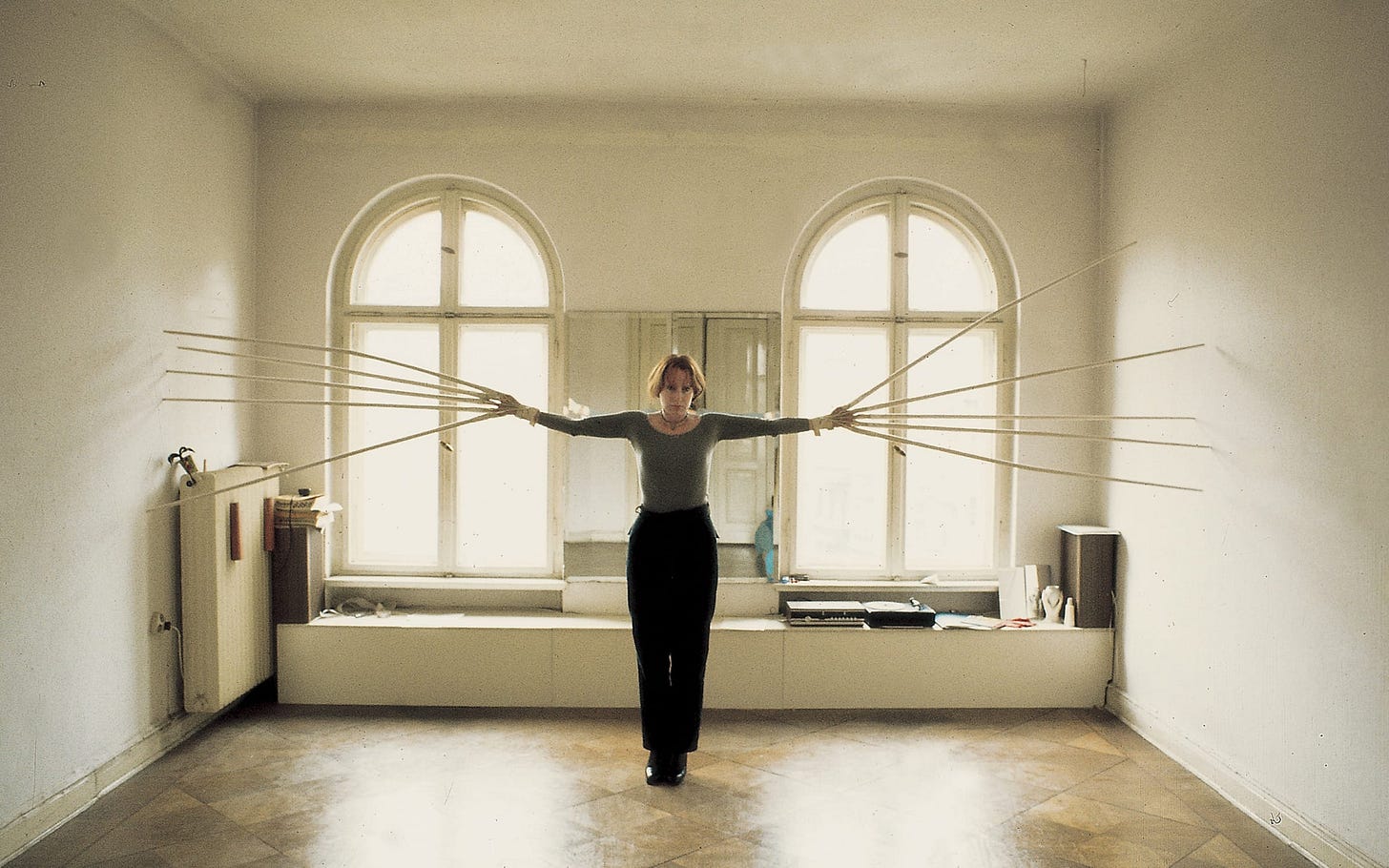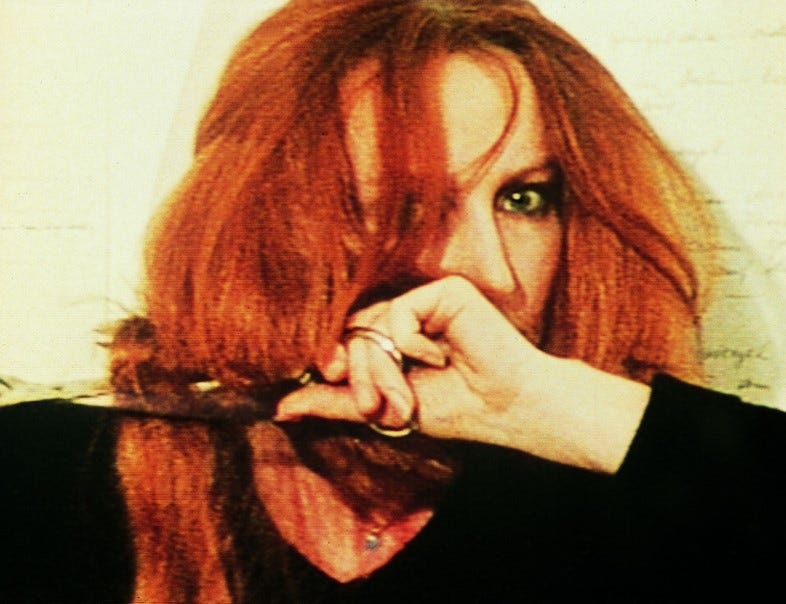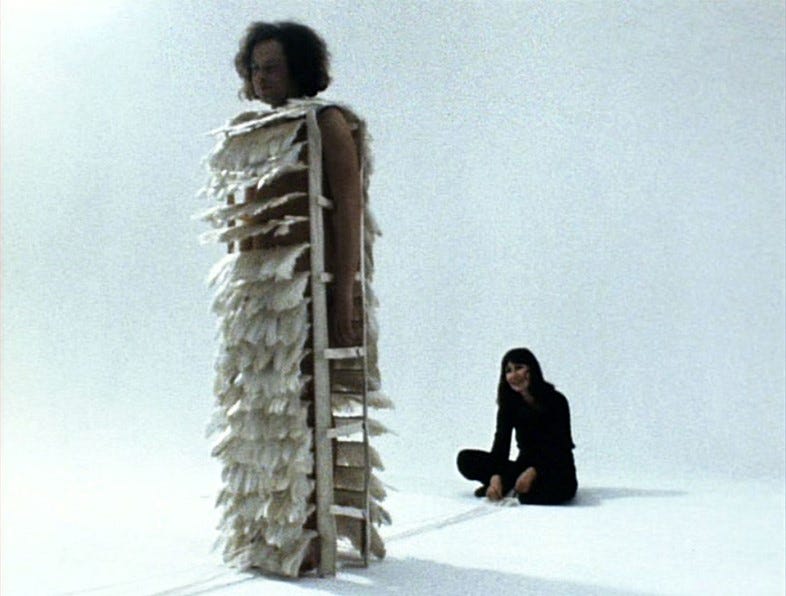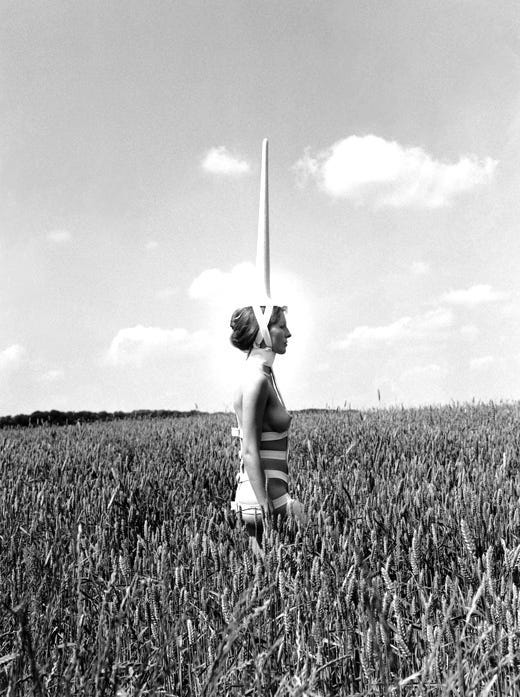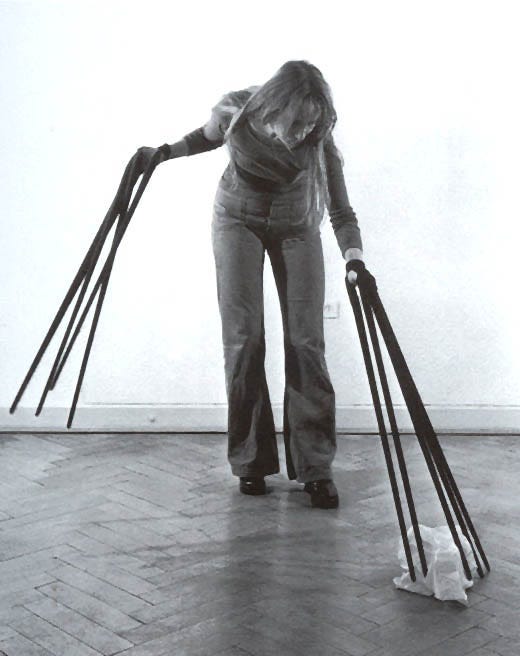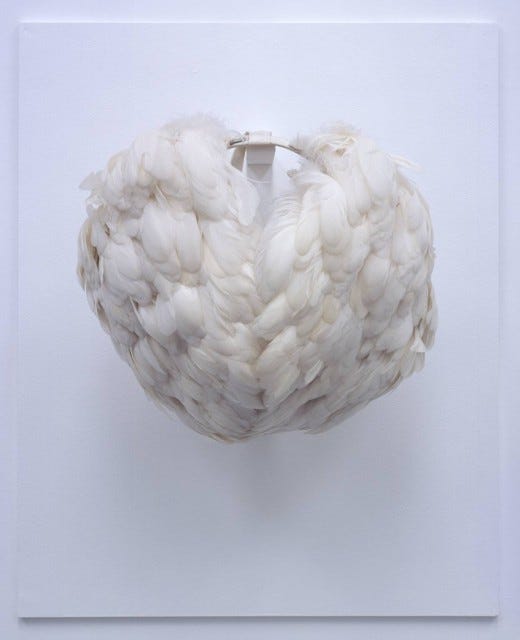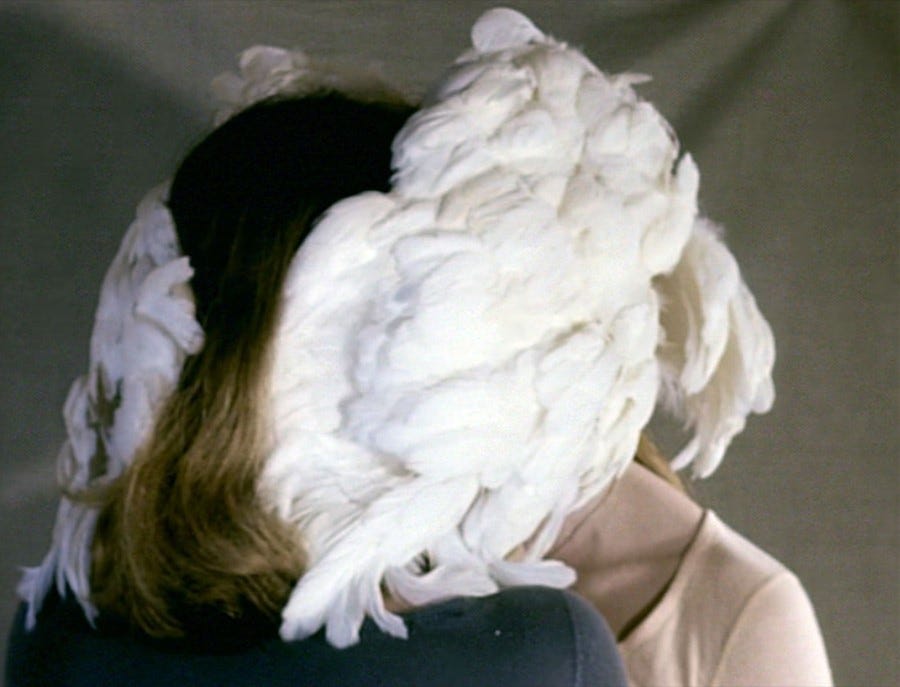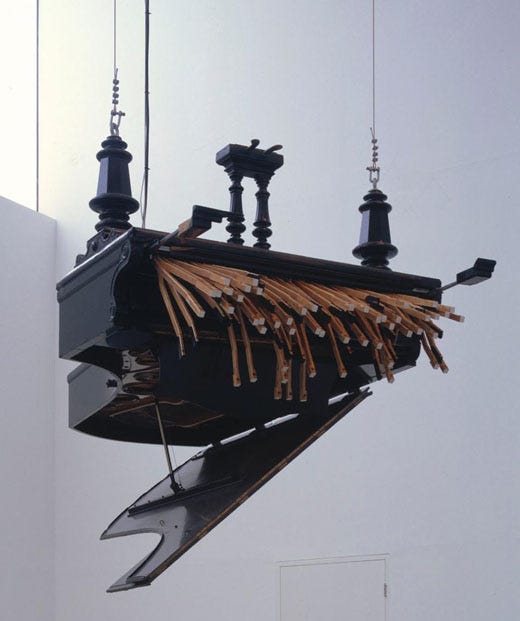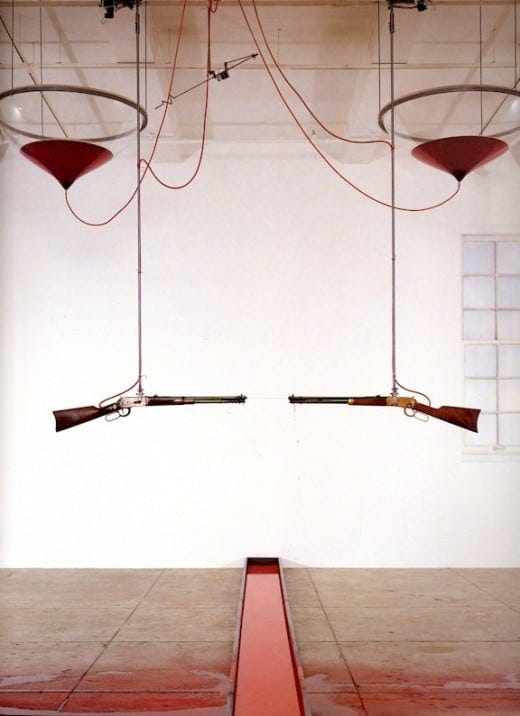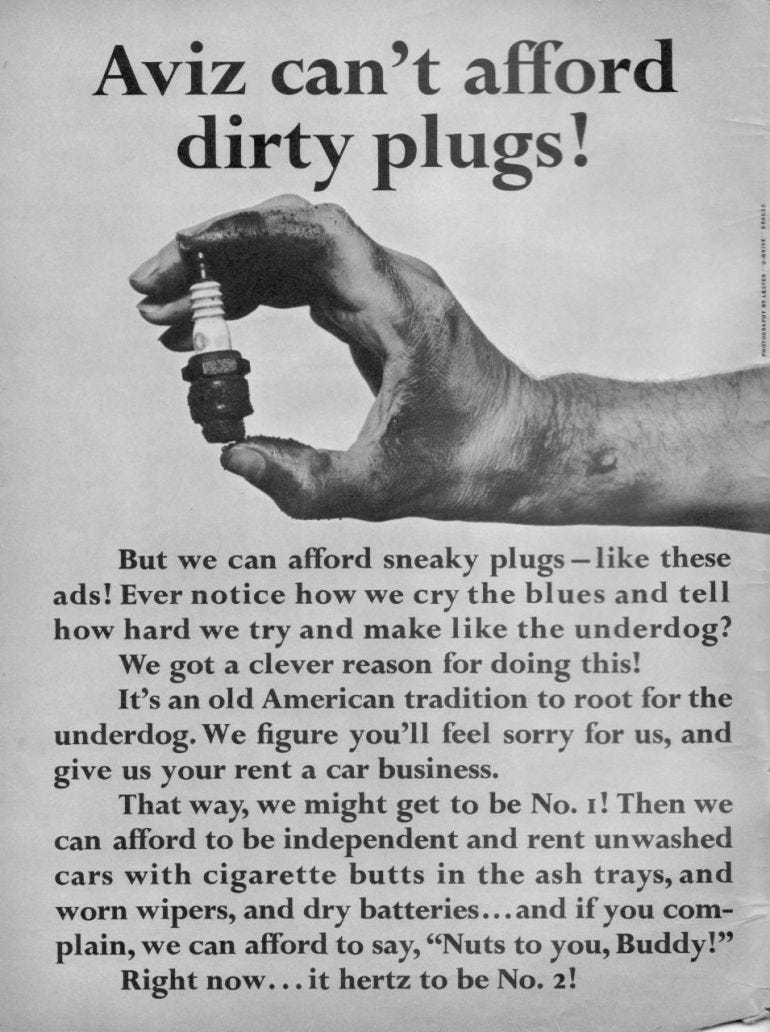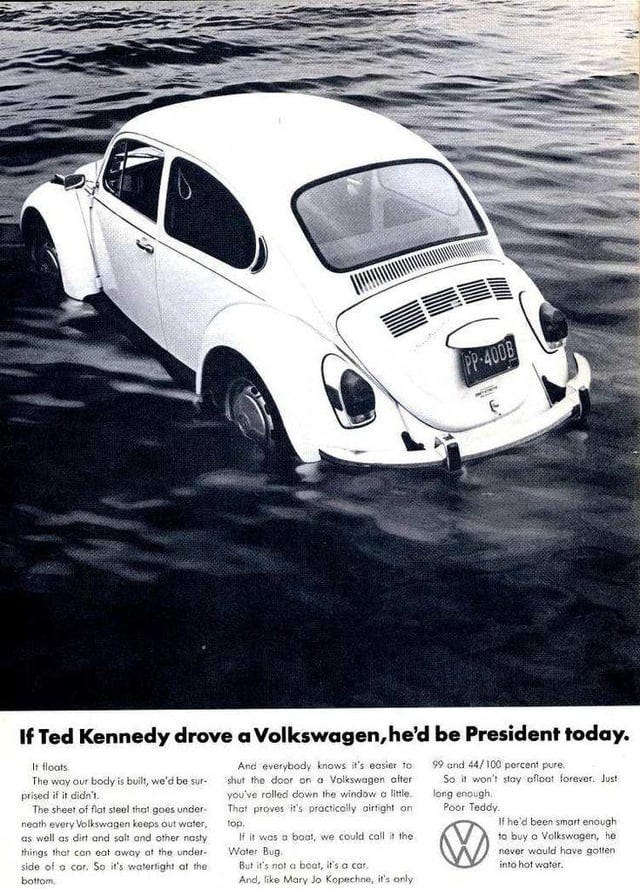It's pretty amazing what people can accomplish when they’re isolated, bed-ridden…or incarcerated.
Frida Khalo began her art career whilst recovering from a horrific accident. She even had an easel made specially to help her paint from her bed - which she would spend 3 months in.
The infamous Marquis de Sade was insanely prolific during his time spent in a dungeon, churning out 11 novels, 16 novellas, and 20 plays. He polished off his highly explicit novella, Justine in just two weeks during 1787.
9 days locked in a room without company, food or sleep gave us Grimes’ breakthrough third album: Visions.
The artist Rebecca Horn was forced into one of these situations by a nasty incident with some fibreglass particles, and her time in isolation allowed her to generate her incredibly unique multidisciplinary art.
Rebecca Horn was born in Germany right at the end of the second world war. She gravitated towards drawing initially as it was language-agnostic.
Growing up in the aftermath of the war in West Germany it was required of children that they learn to speak English or French – people really hated Germans at the time…naturally.
She eventually made it to art school, but was then struck by a series of tragedies.
Firstly, after having relocated to Barcelona she contracted a serious lung infection while working with fibreglass without a mask. She was hospitalized for a year in a sanatorium – totally isolated. During this time both of her parents tragically died.
The physical isolation and loneliness would form the basis of key motifs throughout the rest of her career, and she started to work on new projects from her hospital bed which acted like a sort of cocoon for new creativity to grow in.
Her most famous pieces came directly from this initial evolution.
They are works of body art, extensions to the human form that exist to help us touch what we cannot with our regular bodies.
The sense of being out of reach, is Horn’s biggest influence and creative driver.
Made in the late sixties but unveiled in 1972 alongside some other prosthetic work, one of her most famous pieces is called Einhorn or Unicorn.
As the name suggests, the piece is comprised of film and photographs featuring a model wearing a long white horn strapped to her head, walking through fields of wheat.
The strapping is actually nearly identical to the one’s Frida Khalo painted in her piece “Broken Column” which directly addresses her accident and recovery.
Another famous piece from this collection is the delicate and yet somewhat disturbing “Fingergloves”.
These metre-long wood and material prosthetics were once again worn as part of a performance piece. There is a film where Horn walks around a house, dragging and caressing the long finger tips across the wall.
Evoking a sort of tactile but sinister vibe.
Here’s what Horn had to say about the piece:
“The finger gloves are made from such a light material, that I can move my fingers without effort. I feel, touch, grasp with them, yet keep a certain distance from the objects that I touch. The lever action of the lengthened fingers intensifies the sense of touch in the hand. I feel myself touching, see myself grasping, and control the distance between myself and the objects.”
Feathers would become a key material for Horn and she created many beautiful artworks and performance pieces with them.
They came to represent a sensuality, a sort of other side of the coin to the body extensions, but there is still a story of isolation involved – this time born out of intimacy. The feathers would represent a sort of prison in a way.
Here’s Horn talking about a piece and performance called Cockatoo Mask from 1973:
“The person standing before me touches the feathers delicately, then separates and opens the wings. The spread wings stretch like long bird wings, and softly enclose around our heads. The feather enclosure isolates our heads from the surrounding environment, and forces us to remain intimately alone, together.”
Away from prosthetics and performance, as Horn’s artistic career progressed she pursued a highly successful sculpture career. Including some extremely well-known outdoor commissions.
If you’ve been to the beach in Barcelona, you will have seen her tower L'Estel Ferit.
But they weren’t all architectural and static, many of her sculptures were more kinetic – more like machines. Trembling spoons touch one other, suitcases flutter, rifles take aim, and rhinoceroses meet with an electric kiss.
The focus is not on the machine itself, but on the movements which make the objects appear alive.
Just as she had used prosthetics to extend the body further into spaces and zones that seem untouchable, so she gave life to inanimate objects and gave them impossible emotions.
This marriage of mechanics and bodily functions earned her the nickname The Bionic Woman.
Extend for Ad’s Sake
Great ads go beyond advertising.
The stretch into the cultural fabric.
You know you’ve made it as an ad creative when your idea, your characters, your words extend right out of the intended medium and enters the vernacular.
People start doing impressions.
It takes over schoolyards and sketch shows.
According to this article, these are the top 10 ad slogans used in everyday life:
1. "Good things come to those who wait" – Guinness
2. "Every little helps" – Tesco
3. "It does exactly what it says on the tin" – Ronseal
4. "I'm lovin' it" – McDonalds
5. "Wassssuuuuppp?" – Budweiser
6. "Just do it" – Nike
7. "It's good to talk" – BT
8. "They're grrrrreat" – Kellogg's Frosties
9. "The future's bright, the future's orange" – Orange
10. "Probably the best lager ... in the world" – Carlsberg
Here’s what happens when ads extend into entertainment:
Zang 👍
Like, comment and subscribe etc!
Thanks for reading,
Jonathan ✌️
Links for Ad’s Sake
🧰 Tools Magazine
🧥 Do’s and Donts of a Mach 3+ Lifestyle
💃 Bop Spotter
😎 Scene Cool versus Internet Cool




